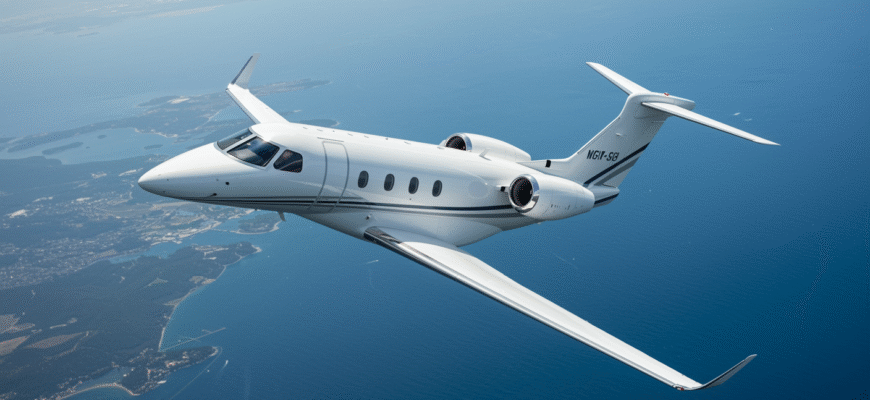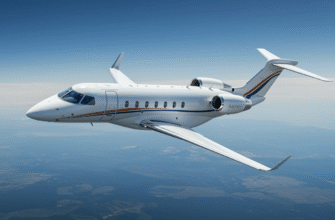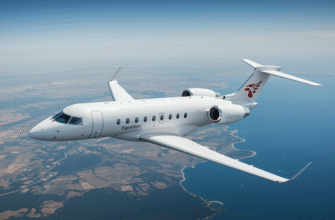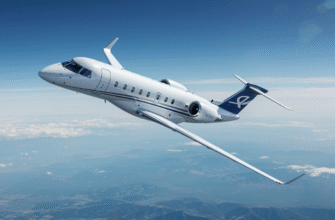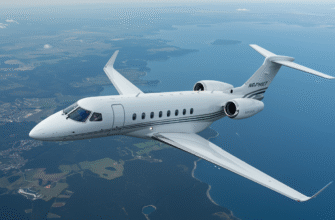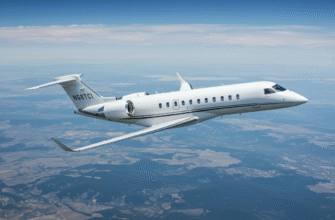What gets private jet buyers talking isn’t just speed or looks—it’s how a plane fits into their world without drama. That’s exactly why the Embraer Phenom 300 and 300E hold center stage. These aren’t just the best-selling super light jets year after year—they’re workhorses with glamour, covering coast-to-coast runs or last-minute mountaintop getaways without skipping a beat. Whether you’re a private owner who wants freedom without complexity, a charter operator needing dispatch dependability, or a fleet manager looking to keep clients happy and margins clean, the 300/300E punches all the right buttons. It’s certified for single-pilot ops, trusted by elite names like NetJets, and until recently, outsold every other bizjet in its category.
Top-Line Specs That Actually Matter
Forget brochure hype. Here’s why operators line up for the 300E: it moves faster and farther than anything else in its class, with numbers that rival light midsize jets. Max cruise punches up to 464 knots. Range clocks in at 2,010 nautical miles with a comfortable load. It climbs to FL450 in under 25 minutes. All that, with a track record for reliability that makes it a favorite for charter and fractional fleets. It’s also loaded with safety-enhancing features—ROAAS (runway overrun alerting), brake-by-wire, and synthetic vision built into the Garmin G3000 touchscreen suite.
Jet Performance That Puts Rivals In The Rearview
Speed isn’t just for bragging rights when you’re trying to outrun weather or make a tight curfew at an airport like Aspen or Van Nuys. Compared to the Cessna CJ4, the Phenom 300E cruises faster and reaches altitude quicker. The Vision Jet? It’s not even in the same speed bracket, topping out around 311 knots versus the Phenom’s 453–460. And the Pilatus PC-24, while impressive with its rough field versatility, still lags on cruise speed, especially at higher altitudes.
Cruise control in a 300E feels like leveling at FL400 and watching the world blur by. It gets up there fast—just 24 minutes, thanks to twin Pratt & Whitney engines that don’t mess around. For high-altitude hot spots like Telluride or Big Bear, quick climbs and steep approaches matter. The Phenom handles both with grace and oomph.
Where it starts to get logistical is the actual range. Aspen to New York? No problem. LA to Miami? Done. The 2,010 nm range with reserves covers most of the continent. It’ll do it without hogging runway space either—3,209 feet for takeoff and 2,212 feet landing. This opens up access to smaller strips, which gives operators more flexibility in where (and how fast) they deliver.
| Performance Metric | Phenom 300E | Citation CJ4 | Pilatus PC-24 |
|---|---|---|---|
| Max Cruise Speed | 464 knots | 451 knots | 440 knots |
| Range (nm) | 2,010 | 2,165 | 2,000 |
| Service Ceiling | 45,000 ft | 45,000 ft | 45,000 ft |
| Useful Load at Full Fuel (est.) | ~1,000 lbs | ~800 lbs | ~1,200 lbs |
Fuel Burn And Operational Costs
Flying private isn’t cheap—no one’s pretending it is. But dollar for dollar, the Phenom 300E makes a solid case when you’re running a strict budget or flying it often. Average fuel consumption falls in the range of 760 to 1,000 lbs/hr depending on speed, altitude, and payload. That beats the PC-24, comes out ahead of the older Lear 75, and goes toe-to-toe with the CJ4, often doing better thanks to its efficient wing and engines tuned for cruise.
Here’s what matters most to operators:
- Direct hourly ops cost: about $1,400–$1,800
- Easy to maintain: highly modular components mean less downtime
- Fuel price wins: even with Jet-A price spikes, it’s more stable than other light jets
One gray area? It’s not the cheapest on ramp fees because airports know it’s a high-end bird, not a toy. But compared to stepping up into a midsize with similar capabilities? You’re still walking away ahead financially.
Pilots Love This Flight Deck For A Reason
No surprise pilots rave about it—fly one and you get it. The Phenom 300E’s Garmin G3000 cockpit isn’t just about looks; it’s built for intuitive hands-on control without overwhelming the brain. Think synthetic vision, automatic pressurization, real-time radar, and touchscreen simplicity that doesn’t lag or require constant babysitting. When it comes to situational awareness, the G3000 leads with interface clarity and refined design.
What sets the 300E apart is the autothrottle system. Only available with the Enhanced version, it takes workload reduction seriously. Cruise manageability? Locked in. Descent planning? Smarter. That’s especially powerful if you’re doing long-day corporate flying or dealing with busy coastal ATC corridors.
For owner-operators, this plane flies like a high-performance car with wings. It reacts fast but won’t surprise you, even on short final. Pilots stepping up from turbo-props like the PC-12 or King Air love how familiar the logic feels. In the fractional world, it’s the workhorse that junior captains and senior FO’s both respect—it does what it says, no surprises.
Still, it’s not flawless. Things to be ready for:
- Avionics menus can be hard to master without type-specific training
- Touchscreen use in turbulence isn’t always smooth—buttons still matter
- Cabin power management quirks pop up unless you’ve had proper tech briefings
That said, pilots generally come away from training knowing how to manage it blindfolded. And for a jet this intuitive and safe, most would take the learning curve again in a heartbeat.
Cabin Talk: They Made It Feel Like a Midsize Jet
If you’re thinking “light jet” means ducking your head and leaving your comfort at the door, the Phenom 300E is about to change your mind. Right off the bat, the cabin gives off serious midsize vibes—flat floor, roomy aisle, real windows, and no need to scrunch your neck every time you stand up.
Forget that old 4-foot height dilemma—this one hits just under 5 feet high and just over 5 feet wide inside. Doesn’t sound like much on paper, but the layout makes every inch count. The way the seats are spaced, tracked, and swiveled makes it feel more like a lounge than a narrow tube. The 6+1 club setup (that’s two rows of chairs facing each other plus an extra) actually works for in-flight convos, not just awkward knees-touching close-ups. The belted lav in the back? Fully enclosed, window included, and certified for passenger use.
It’s no surprise more owners and charter clients say it feels like a baby Challenger on the inside—and it’s not just hype once you’ve flown a few hours in it.
What’s New in the 300E Interior
Here’s where Embraer really started listening. The 300E upgrade brought more than stitching and wood trim swaps. Those new leather seats aren’t just cosmetic—they rotate a full 180°, slide deeper, and come with individual drawers under each one for stashing headphones, laptops, or that weirdly-shaped charger brick the hotel gave you.
The vibe is personal. Adjustable lighting. Zoned climate. You want Netflix, they’ve got internet that handles it without buffering. Want quiet? Noise-level drops inside are no joke—charter pilots say they finally don’t have to yell to get coffee handed back.
This is a jet that flexes for how you want to use it:
- Work: Smooth Wi-Fi, USB ports, tablet holders, and quiet enough for real Zoom meetings.
- Lounge: That 6-seat club isn’t just talk. Feet up, drink down, and plenty of room to relax midair.
- Sleep: Long day, late departure? The seats aren’t lie-flat, but they recline far enough to doze comfortably on a multi-hour leg.
When flying becomes something you look forward to—even for a Tuesday client run—you know the layout’s doing something right.
Baggage Space That Shocks Even Pilots
The minute someone lists what they want in a jet, there’s always that one ask: “Can I bring my stuff?” And the Phenom 300E’s answer is always: yes, and probably your kid’s stuff, too.
Between the external hold and internal space, you’re looking at 84 cubic feet. Translation? That’s everything from checked-size roller bags to snowboards, strollers, or those oddly shaped golf bags that don’t quite zip right. Load-in is hassle-free, and the compartment’s pressurized—so go ahead, bring the pet carrier.
And here’s the kicker. Compared to competitors:
- CJ4: Smaller cargo volume, less flexible for bulky gear.
- Pilatus PC-24: Big on cargo, but heavier runway requirements, slower cruise.
- Legacy 450: Roomy, yes—but you’re pushing into midsize class and a bigger operating bill.
If you’ve got clients who fluctuate between two roller bags and a music gig requiring three guitars and an amp, this is the bird that handles both ends of that spectrum without blinking.
Ownership, Uptime, and Real-World Reliability
Buyers want more than flashy interiors and speed numbers—they want to know: will this jet fly when I need it to? That’s why NetJets, Flexjet, and other major fleets keep betting on the 300 series. These aren’t glow-up decisions; they’re uptime-and-spreadsheet moves.
Dispatch reliability on the Phenom 300 and 300E consistently hovers around the high-90s percentile. Operators pushing hundreds of hours a year say it’s the cleanest logbook they’ve flown. Preventative maintenance is the name of the game—but when something does go off-plan, the turnaround is quick.
Annual Costs from Hangar to Dispatch
This isn’t your average guy’s weekend toy. It’s often flying twice a day and still keeps the bills digestible. Operators report typical direct operating costs around $1,600/hour. That includes fuel, inspections, and standard maintenance.
Fixed costs like hangar space, insurance, and crew (if you go dual-pilot) put it into upper six-figures per year—but still under a million in most scenarios. MX schedules are friendly: engine checks and minor inspections every 200-300 hours; major phases spread far enough to avoid downtime clusters.
Bottom line? It flies a lot without eating your whole budget alive.
Known Issues and What to Watch
No plane’s bulletproof, and the Phenom 300E has its quirks. Pilots report occasional gremlins in the touchscreen avionics—the Prodigy Touch system sometimes needs a reset mid-flight (usually harmless, but annoying). Cabin tech can glitch, mostly around streaming media rather than flight-critical systems.
Main things to stay ahead of once it crosses 1,000+ hours:
- Seats: Mechanisms in the track can get sloppy if not kept clean/lubed—especially on aircraft used heavily in charter.
- Brakes: Excellent stopping power, but brake wear can spike if you’re using short runways constantly.
- Environmentals: The A/C system occasionally underperforms in desert climates—some fleets opt for tweaks or supplemental pre-cooling before boarding.
None of these are deal-breakers. But when you’re buying a $10 million jet, knowing the “watch this spot” zones is the edge most brochures leave out.
